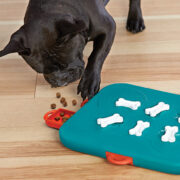Does this sound familiar? You pour the kibble into your dog’s food bowl, and bam! Like a vacuum cleaner, your pup hoovers it up. That dry food goes so fast that you wonder if your dog is in training for some kind of “who can eat the fastest” race.
You might wonder if this is natural. Could there be a problem with gulping down one’s food like a starving beast? In some cases, yes. It can lead to vomiting, upset stomach, and bloating, also known as gastric dilatation-volvulus (GDV). It can also be a symptom of other medical conditions.
While not every fast eater has digestive issues, it doesn’t hurt to try and slow your dog down and encourage them to chew his food. Slower eating promotes healthy digestion.
Instinctual Gulping
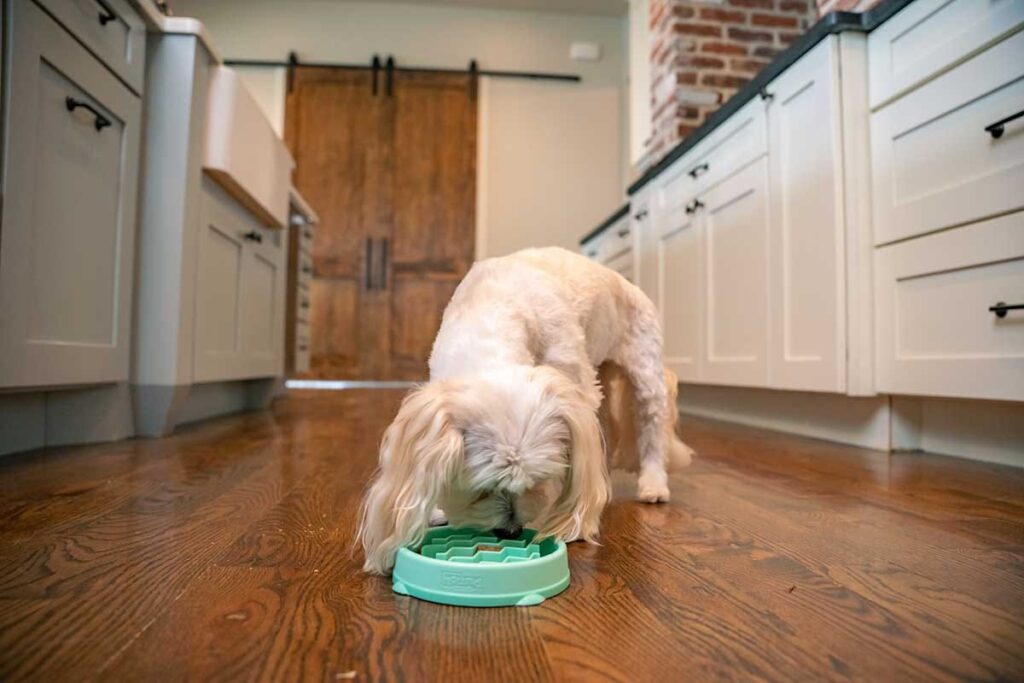
For some dogs, fast eating is instinctual.
In the wild, dogs have to eat fast to survive. Imagine a pack of wolves or wild dogs descending on a deer carcass; you know it’s every dog for themselves. No one is doling out equal portions and reminding them to mind their manners.
This instinct drives some dogs to gulp their food whole, even when they’re pampered pets. From rescue dogs to purebred puppies, some are fast eaters.
The instinct is in full force if you have multiple pets because your pup may feel they have to gobble down their food before someone else does. This is true with littermates or even in two-dog households where one dog is older and chews its food daintily while the puppy tears through mealtime like the house is on fire and he needs to gobble down dinner before escaping.
However, in some cases, your dog might go from an average eater to a fast-paced eater, and that’s a bit unusual.
Is This a New Behavior?
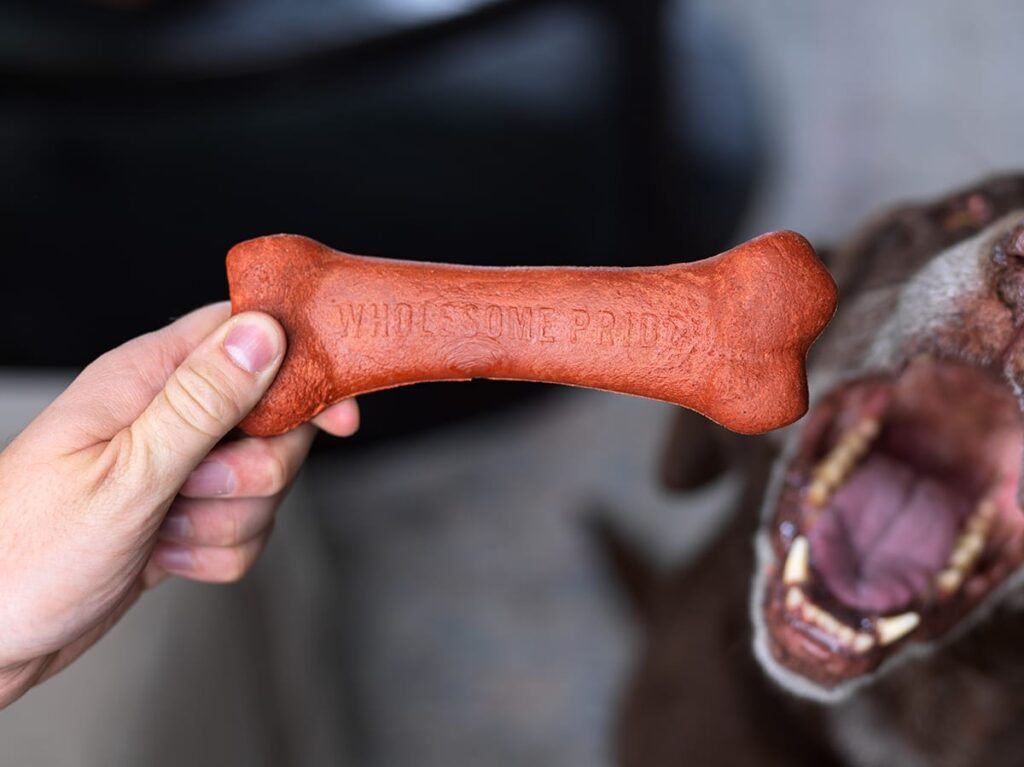
While some dogs might always treat mealtime as a race to a glittering prize, if your dog’s behavior goes from savoring their food to fast-paced chowing, it’s a good idea to make a veterinarian appointment.
Anytime there’s a change in your dog’s behavior, it can be a symptom of health issues. In the case of a change from normal eating patterns to a fast-paced gobble, it could be a symptom of parasites. That’s because parasites suck up the nutrients leaving your dog ravenous.
Once your dog is diagnosed, it’s a simple medication to get rid of them.
Maybe Your Dog Doesn’t Like the Food
Some dogs are picky eaters – especially older dogs who can develop food preferences that don’t include the same old kibble. Dog owners often change dog food brands, mix wet food with dry or add tasty mix-ins to encourage their choosy adult dogs to eat.
These are usually not the gulpers. However, some think such dogs eat fast because they’re hungry and want to get it in their bellies as quickly as possible.
Fun fact: dogs have fewer taste buds than humans!
The Role of the Digestive System
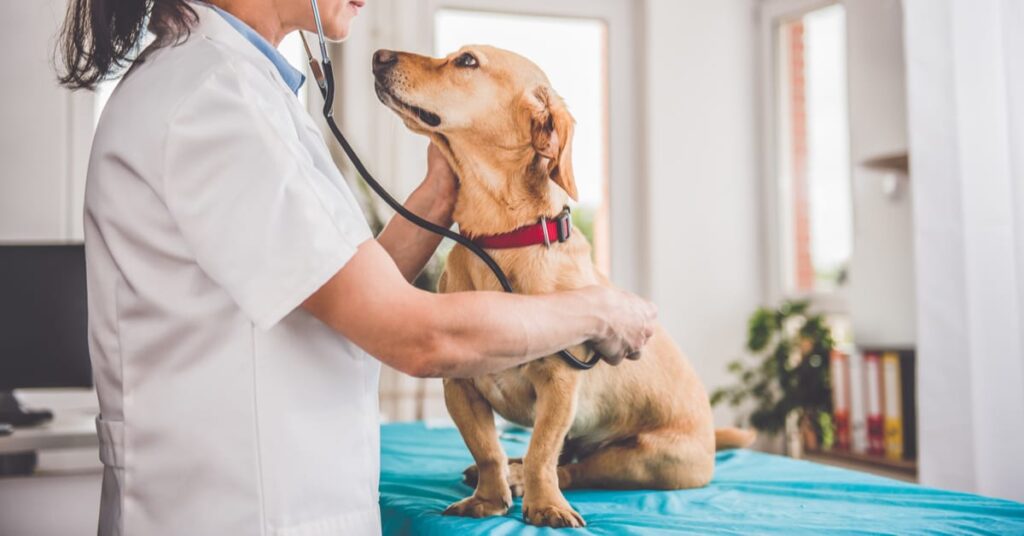
Chewing or mastication helps reduce digestive problems. Your dog’s mouth and teeth play an essential role in breaking down food so the rest of the system can do its part.
When your dog chews his food and swallows it, the smaller pieces land in the stomach for processing and move through the intestines, the pancreas, and finally, the colon for waste removal.
When any part of this system is blocked or not working properly, the whole thing can break down and cause health issues. It all starts with chewing the food.
The Dangers of Gulping Food Whole
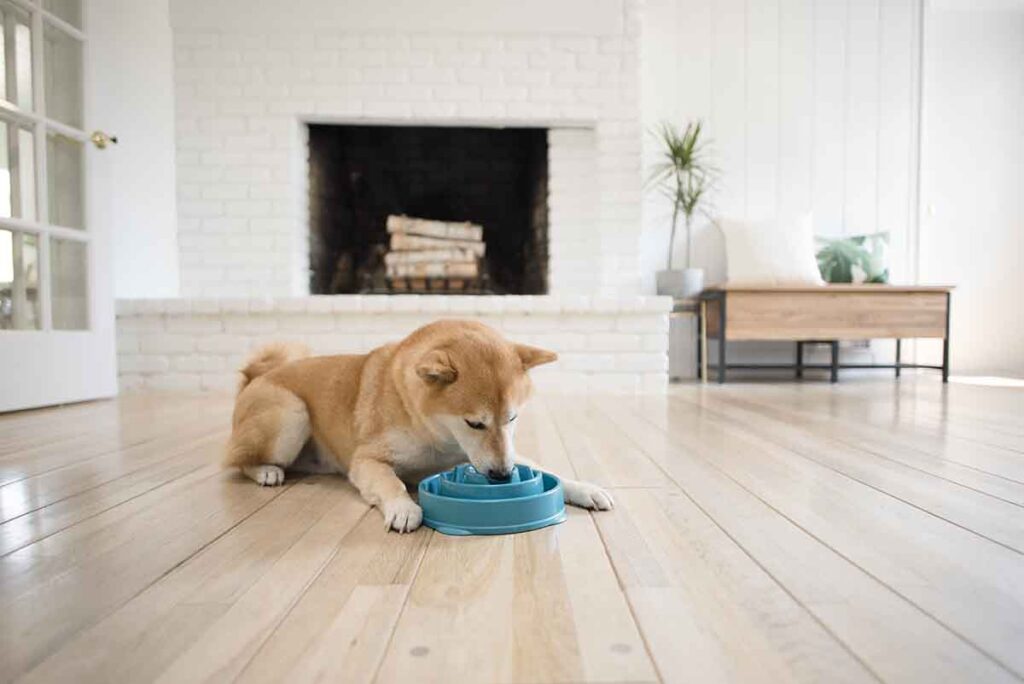
It’s easier to digest smaller pieces of food. When dogs hoover their food, their digestive system must work harder to digest it.
Habitual fast eating can sometimes lead to life-threatening medical conditions like gastric dilatation-volvulus or GDV, which causes a swollen tummy. The problem stems from the fact that when your dog eats fast, they also gulp down lots of air.
All that extra air can lead to bloating, and unlike when you or I feel bloated and sip an antacid to feel relief, dog bloating can be life-threatening. That’s because when your dog gulps down their food (and the accompanying air), your pup’s tummy can rotate, which traps air and gas and cuts off the stomach’s blood supply.
It’s much more than an upset stomach and is as painful as it sounds. Worse, it can kill your dog within hours.
The only treatment is to get them to the emergency veterinarian as fast as possible, where they can help your dog release gas and monitor the heart. Due to their barrel chests, some dog breeds are at greater risk, including Great Danes and St. Bernards.
Before you panic, know that your dog can also have a swollen belly and upset stomach without it being this dangerous gdv. However, only a veterinarian will be able to diagnose it.
Your Dog Doesn’t Chew Food. How Can You Slow Them Down?
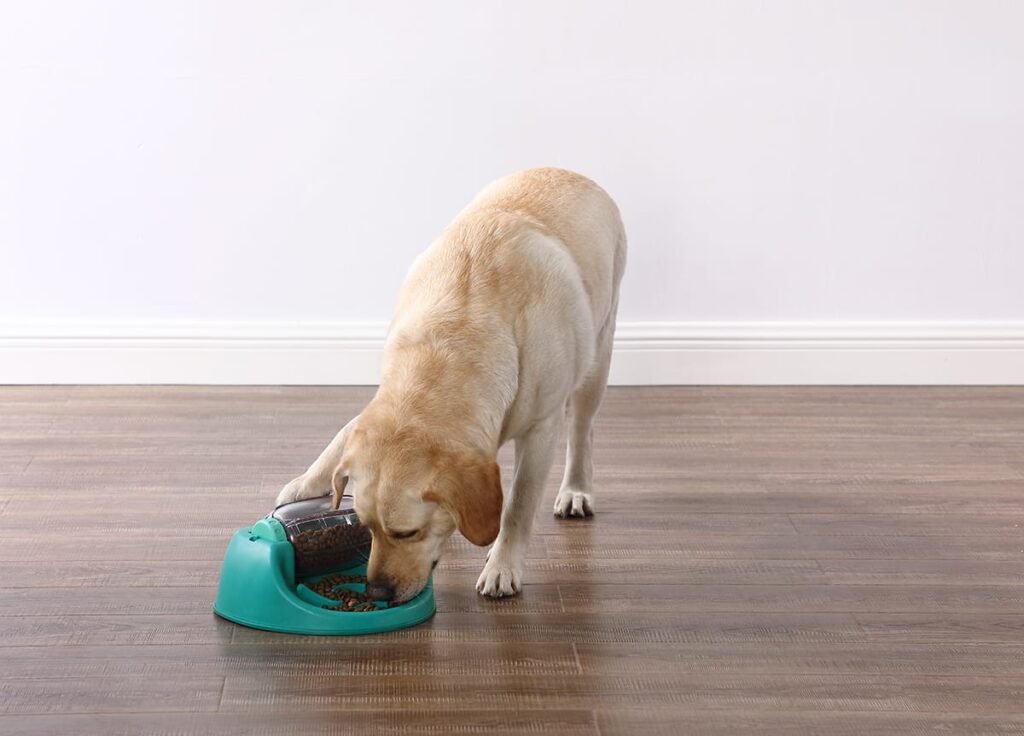
Slow-feeder bowls, aka puzzle bowls, can help. Puzzle toys add obstacles to the bowls in the form of pins or mazes that slow your dog’s mouth and force your pup to chew his food. Even if he only breaks the kibble into one or two smaller bites, that’s helpful.
Additionally, you can turn mealtime into playtime by giving your dog a treat dispensing toy filled with kibble. This way, your pup paws the dog toy and rolls it around on the floor, dribbling out dry food as a reward. This also gives your dog crucial mental stimulation.
I’ve known people who slowed their dog’s eating by pouring the kibble on the ground and spreading it around.
There are many creative ways to slow your dog’s munching to a slower pace. See below.
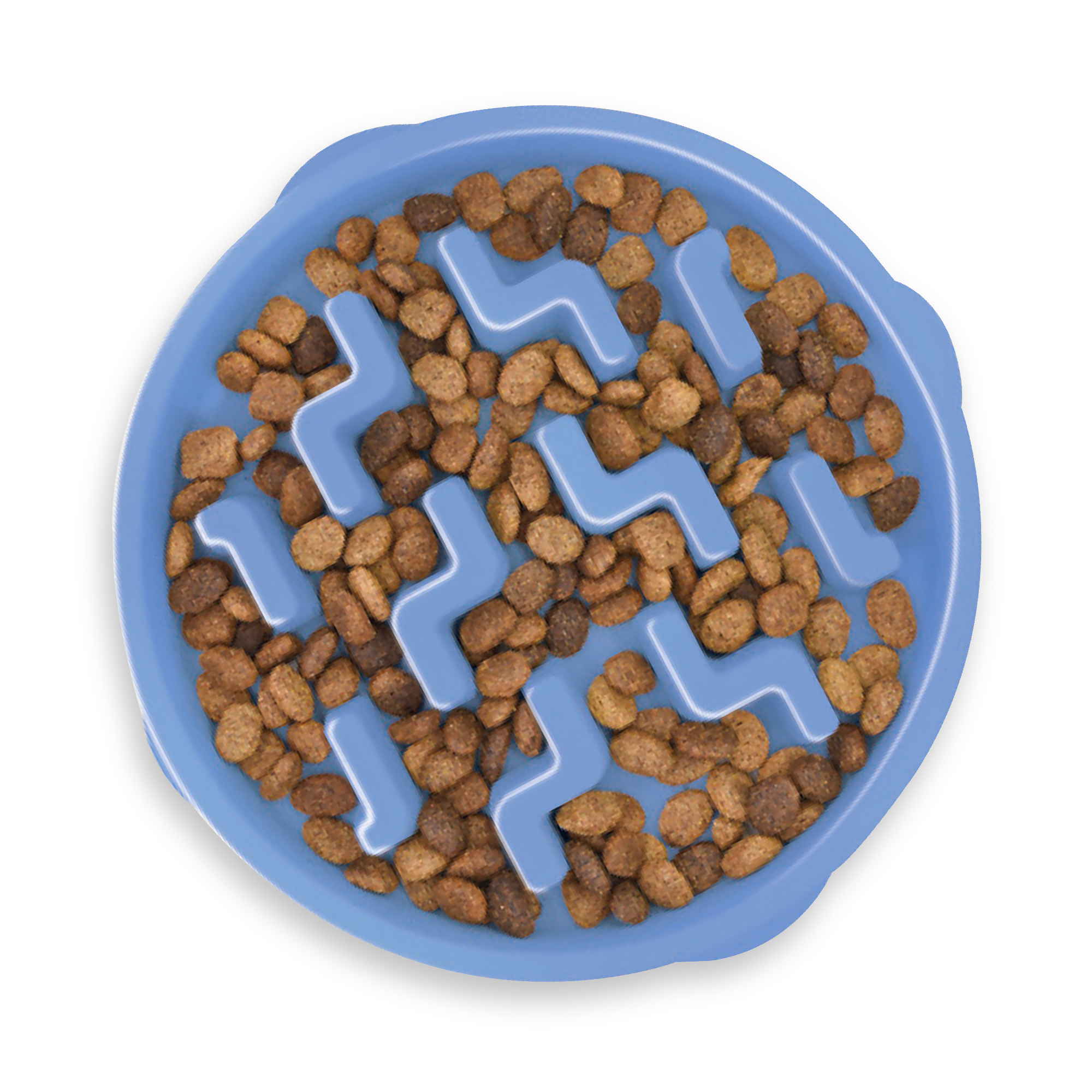
Fun Feeder Slo Bowl, Slow Feeder Dog Bowl
Why do dogs feel like eating is a race? We’re not sure, but we solved the problem anyway. With meal-lengthening ridges, deep grooves, and challenging mazes, Outward Hound Fun Feeder Slo Bowls keep pups engaged for up to 10x longer at chow time. By creating a fun, healthy eating pace, our slow feeders help reduce obesity and bloat and improve your dog’s digestion for happier, healthier pups…
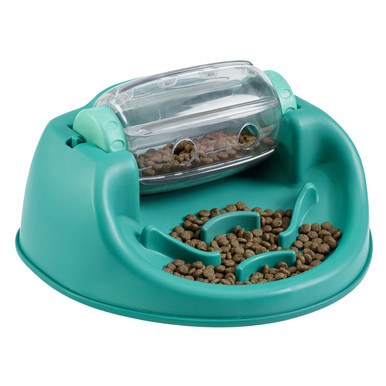
Dog Spin N’ Eat Puzzle, Green
Make mealtime fun and exercise your dog’s mind by replacing your standard dog bowl with a puzzle feeder! The Dog Spin N’ Eat dog puzzle holds up to 2 cups of food. It keeps dogs busy by encouraging your dog to work on their problem-solving skills. The mental workout from this level 2 dog food puzzle feeder fights boredom and extends mealtime, giving them the mental stimulation they crave. It’s easy to use!…

Lickin’ Layers Dog Puzzle Game, Multi
Lickin’ Layers is a Level 2 dog puzzle game from Nina Ottosson by Outward Hound. Dogs have to navigate the three layers of food compartments by spinning each one to reveal the treats. Dog puzzle games help pups use their natural instincts and behaviors to help their brains develop through mental stimulation, and ones like Lickin’ Layers provide the enrichment they crave! With over 100 treat compartments,…
What are the Benefits of Your Dog Chewing Food?
Dogs who savor their food are less likely to have digestive issues. Instead of inhaling their food and vomiting it up or, worse, experiencing dangerous stomach bloat, they can chew their food, swallow it, and let the digestive system do its job.
Now that you have some ideas on how to slow your dog’s eating and why it’s helpful, you can help your dog adjust to a slower eating style.
 Chewy
Chewy Amazon
Amazon
